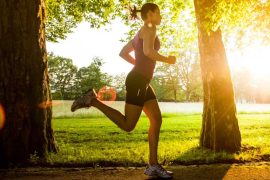Yoga can be an effective tool for weight loss and increasing flexibility. By incorporating various poses and sequences, yoga promotes physical activity, enhances muscle tone, and improves metabolism. Additionally, the practice encourages mindfulness and stress reduction, which can help prevent emotional eating. Over time, regular rocket yoga sessions can lead to improved flexibility, balance, and overall body awareness, making it easier to engage in physical activities.
What is Rocket Yoga?
Rocket Yoga is a dynamic and energetic style of yoga that emphasizes strength, flexibility, and endurance. It is characterized by a fast-paced sequence of asanas (postures) designed to build physical strength while encouraging mental focus and mindfulness. This style of yoga is particularly appealing to practitioners who enjoy a vigorous workout combined with the traditional elements of yoga practice.
Origins of Rocket Yoga
Rocket Yoga was developed in the 1980s by Larry Schultz, an American yoga teacher, who was inspired by the Ashtanga Vinyasa Yoga tradition. Schultz created Rocket Yoga as a more accessible alternative to the traditional Ashtanga practice, making it suitable for practitioners of varying skill levels. The name “Rocket” comes from the phrase “it gets you there faster,” highlighting its focus on intensity and dynamic movement. Schultz’s adaptations allowed for modifications and variations in poses, making the practice more inclusive while retaining the core principles of Ashtanga Yoga.
Key Features of Rocket Yoga
- Dynamic Sequences: Rocket Yoga consists of vigorous and flowing sequences that incorporate various asanas, including inversions, arm balances, and backbends. The sequences are designed to build heat and increase cardiovascular endurance.
- Accessibility and Modifications: While Rocket Yoga is energetic, it encourages practitioners to modify poses according to their abilities. This makes it suitable for individuals with different fitness levels and flexibility.
- Focus on Breath: Like other forms of yoga, Rocket Yoga emphasizes breath awareness and the synchronization of breath with movement. Practitioners learn to maintain a steady breath even during challenging sequences.
- Inversions and Arm Balances: Rocket Yoga includes a significant focus on inversions and arm balances, which build upper body strength and improve balance and coordination.
- Creative Variations: Rocket Yoga encourages creativity and spontaneity, allowing practitioners to explore different variations of poses and sequences, which keeps the practice engaging and fun.
How Rocket Yoga Boosts Health
- Strength Building: The dynamic nature of Rocket Yoga helps build muscular strength, particularly in the core, arms, and legs. The use of arm balances and inversions engages various muscle groups, enhancing overall body strength.
- Increased Flexibility: Regular practice promotes flexibility and mobility in the joints, particularly in the hips, shoulders, and spine. The incorporation of diverse asanas encourages a full range of motion.
- Improved Cardiovascular Health: The fast-paced sequences elevate heart rates, providing a cardiovascular workout that improves heart health and stamina.
- Enhanced Mental Focus: The combination of movement and breath awareness helps improve concentration and mental clarity. Practitioners often report reduced stress and increased mindfulness.
- Better Balance and Coordination: The emphasis on inversions and balancing poses helps improve overall balance, coordination, and body awareness.
Rocket Yoga Sequences
Rocket Yoga sequences are often divided into three main variations, each offering a unique focus and intensity:
- Rocket 1: This sequence is more accessible and focuses on foundational poses. It includes standing poses, seated stretches, and basic inversions, making it suitable for beginners or those seeking a gentler practice.
- Rocket 2: This sequence is more advanced and includes a wider range of arm balances and inversions. It builds on the poses from Rocket 1, adding complexity and intensity to challenge practitioners.
- Rocket 3: This is the most advanced sequence, incorporating complex postures and longer holds. It is designed for experienced practitioners who are comfortable with dynamic movements and advanced poses.
In addition to these structured sequences, Rocket Yoga often encourages improvisation, allowing practitioners to explore new poses and transitions based on their comfort level and creativity.
Rocket Yoga is an invigorating and accessible form of yoga that offers a blend of strength, flexibility, and mindfulness. With its dynamic sequences and emphasis on modifications, it appeals to a wide range of practitioners, promoting overall health and well-being. Whether you are a beginner or an experienced yogi, Rocket Yoga provides an exciting way to deepen your practice while enjoying the benefits of a physically demanding workout.
Disclaimer:
The information contained in this article is for educational and informational purposes only and is not intended as a health advice. We would ask you to consult a qualified professional or medical expert to gain additional knowledge before you choose to consume any product or perform any exercise.







